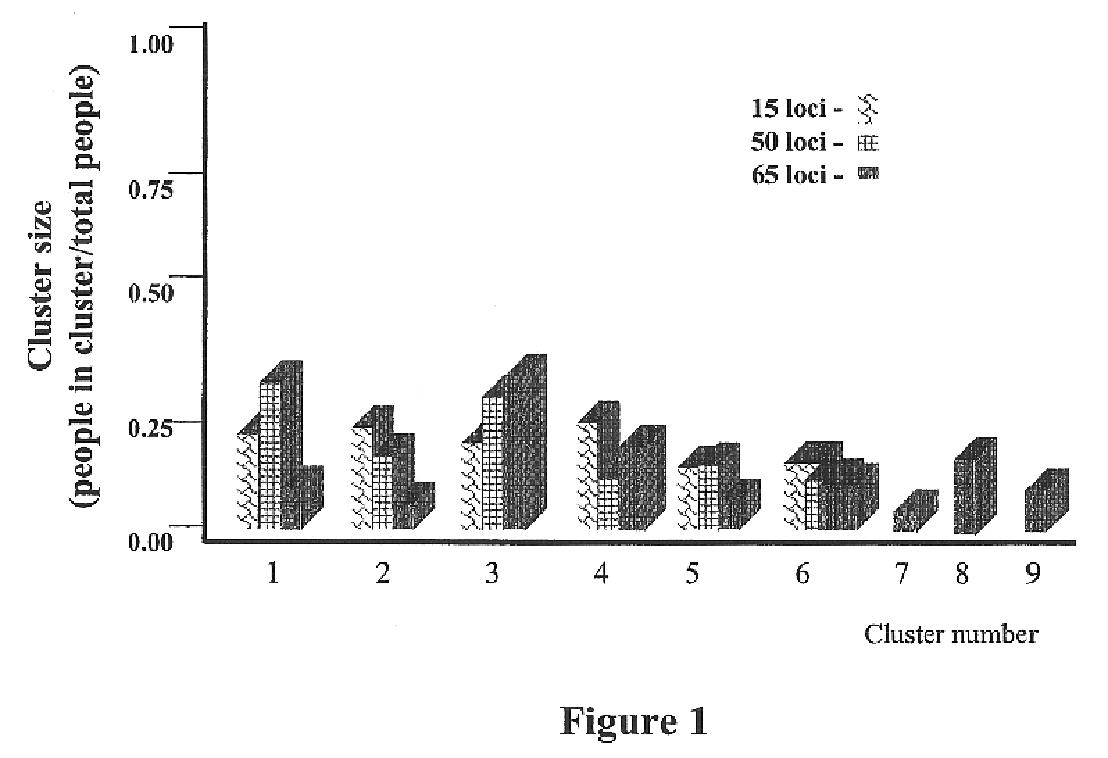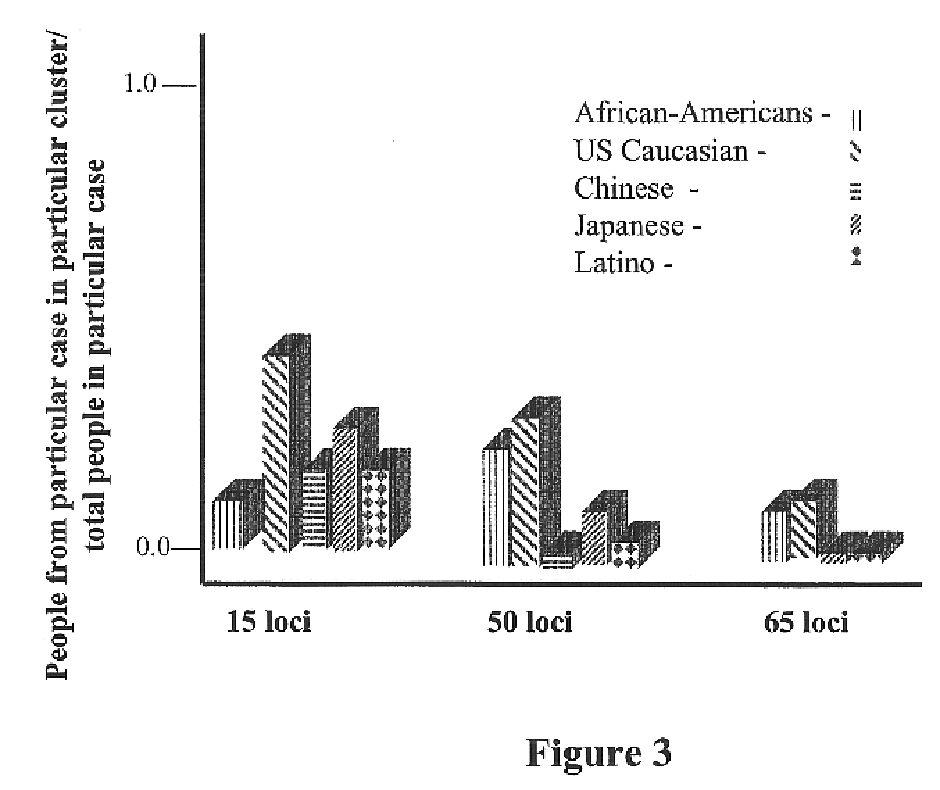Methods of genetic cluster analysis and uses thereof
- Summary
- Abstract
- Description
- Claims
- Application Information
AI Technical Summary
Benefits of technology
Problems solved by technology
Method used
Image
Examples
example 1
Use of the Genetic Clustering Algorithm to Assess the Ethnic Diversity of a Population
Sample Population:
[0191]Individuals were recruited from the greater San Diego metropolitan area. Respondents were categorized into 5 major ethnic groups based upon self-reporting of the ethnic origin of both parents and all grandparents. Five ethnic classifications were chosen: African American, US Caucasian, Chinese, Japanese and Hispanic / Latino. 95 DNA samples were selected from each classification and included only samples with grandparents reported from the same classification.
[0192]All participating individuals signed informed consent agreements in this IRB approved study. Individuals were given coded identification and names were not included in the database. DNA was isolated from whole blood using standard techniques. Samples were stored frozen with bar coded labels.
[0193]Sixty-five SNPs were genotyped in each sample. Thirty-one SNPs were from a 450 kb region of chromosome 8, 19 were from an...
example 2
Use of the Genetic Clustering Algorithm to Assess the Heterogeneity of the Populations in a CNS Case Study
[0207]A study was designed to identify genes that predisposed to the development of a CNS disease. Candidate genes were selected because of their putative roles in the biology of the CNS disease. Five single nucleotide polymorphic (SNP) markers were developed from genomic regions containing these candidate genes and genotyped in both patient and control populations using the methods described in Example 1.
[0208]The patient population consisted of 140 predominantly Caucasian patients diagnosed with a CNS disease. Two populations were used as control groups. The first were 94 ethnically matched individuals who were ascertained to be free of psychiatric disease by history and psychiatric examination. The second group consisted of 95 ethnically matched individuals from the San Diego area who were reportedly healthy on the basis of history alone.
[0209]The genotypes were analyzed for ...
PUM
| Property | Measurement | Unit |
|---|---|---|
| Distance | aaaaa | aaaaa |
Abstract
Description
Claims
Application Information
 Login to View More
Login to View More - R&D
- Intellectual Property
- Life Sciences
- Materials
- Tech Scout
- Unparalleled Data Quality
- Higher Quality Content
- 60% Fewer Hallucinations
Browse by: Latest US Patents, China's latest patents, Technical Efficacy Thesaurus, Application Domain, Technology Topic, Popular Technical Reports.
© 2025 PatSnap. All rights reserved.Legal|Privacy policy|Modern Slavery Act Transparency Statement|Sitemap|About US| Contact US: help@patsnap.com



